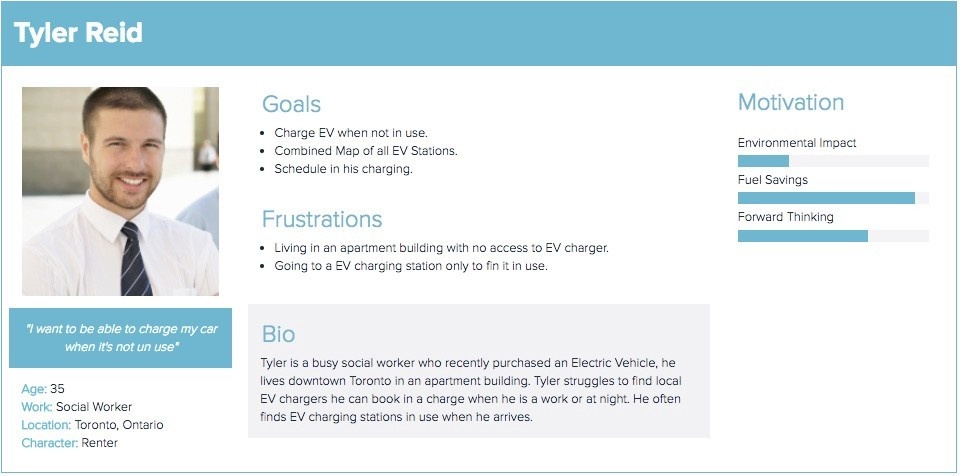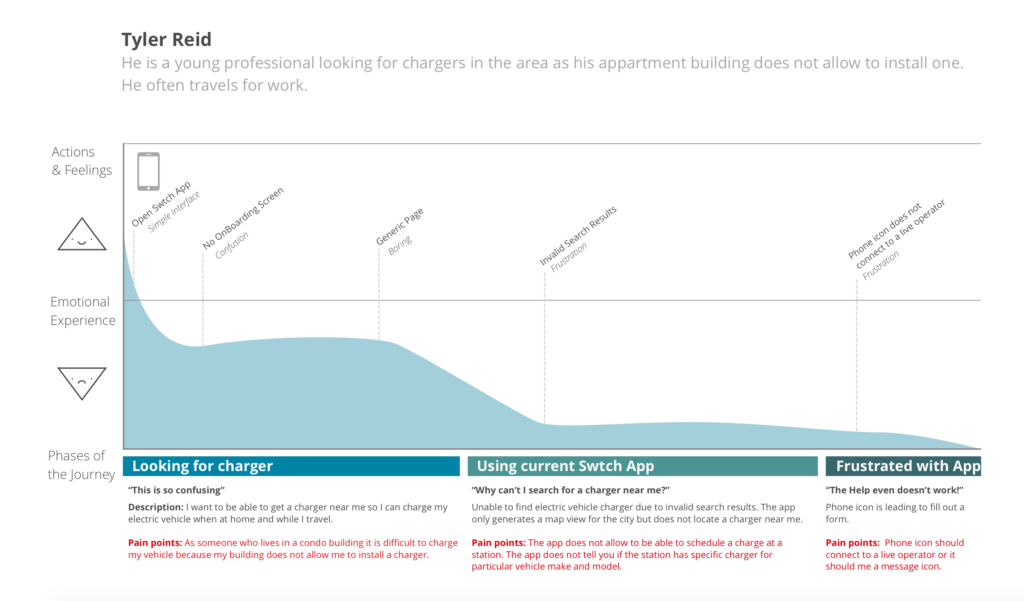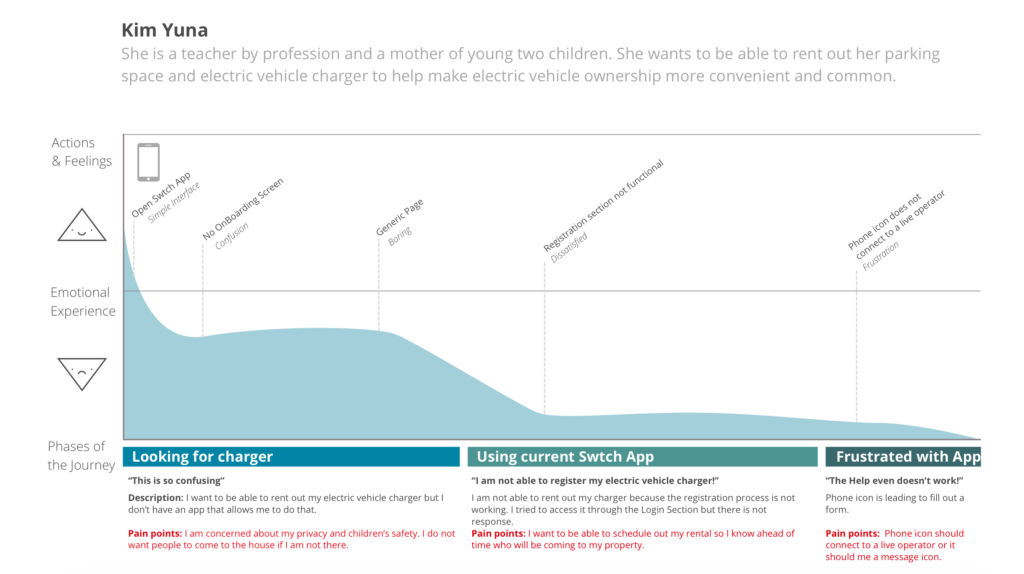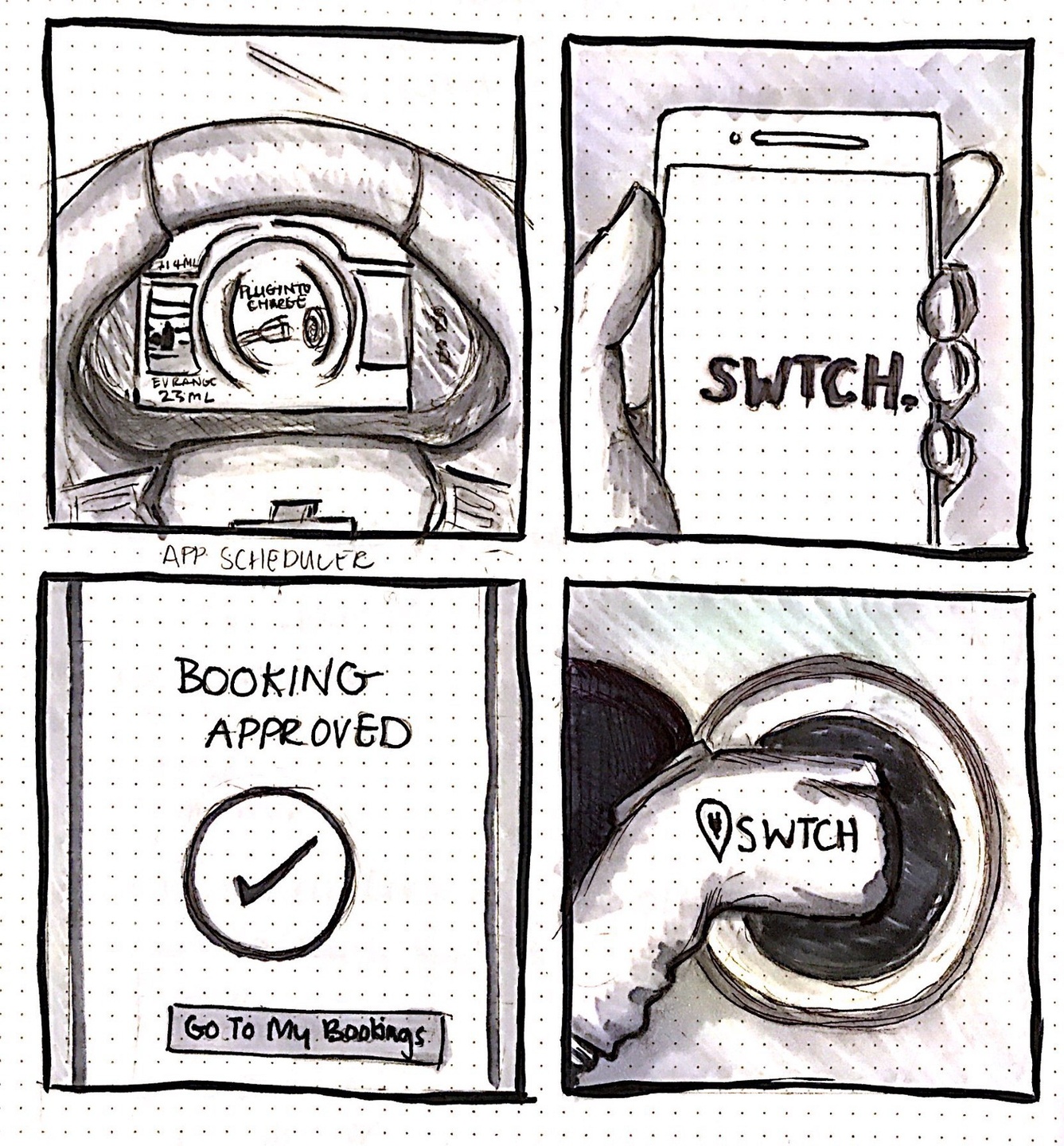
Tyler is a social worker and wants to make conscious socially responsible decisions. He lives in Toronto and drives downtown for work. He lives in an appartment building that does not allow for personal EV chargers to be installed. Since he does not have easy access to an EV charger, he primarily relies on external sources. He wants to be able to schedule his charges for times when his vehicle is not in use. He finds that with competitor apps he can find the convenient charger location but many times the charger is already in use when he gets there. He would like to get live information about charger availability so he does not waste his time by going to stations that are already in use.

Kim is a teacher by profession. She lives in Richmond Hill with her husband and two kids. She own an electric vehicle and wants to help in the effort to make EV chargers more accessible to fellow EV owners because she understands the frustration of not having access to one when she needs it. However, she has some concerns about renting out her personal charger. She has concerns about the privacy and security of her home because she has young children. She is not sure how renting out her charger might impact her current residential homeowners policy. She wants to be able to rent out her charger in a safe way.
User Journey Map
I wanted to get a better understanding of the user journey and their pain points.

In the current customer journey for Tyler
- he found the onboarding screen to be confusing
- landing page was generic
- he was not able to use the search bar to find the needed information
- he was not able to find EV chargers near him
- hard to ask questions or get customer service




“Rabeea is extremely productive, driven and creative and it was a pleasure working with her. We have had the opportunity to collaborate on a mobile app re-design, web design and new branding strategies and I was extremely pleased with the results. Rabeea is an asset to any team and a joy to work with.”
Evan Shabsove
Technical Director | Swtch
Have an idea?
Let’s talk about itCanada 🇨🇦
250 Yonge Street, Suite 2201
Toronto, Ontario Canada
M5B 2L7
United States 🇺🇸
99 Wall Street Suite1054
New York, NY, USA
10005
United Kingdom 🇬🇧
24 Holborn Viaduct,
London, United Kingdom
EC1A 2BN












